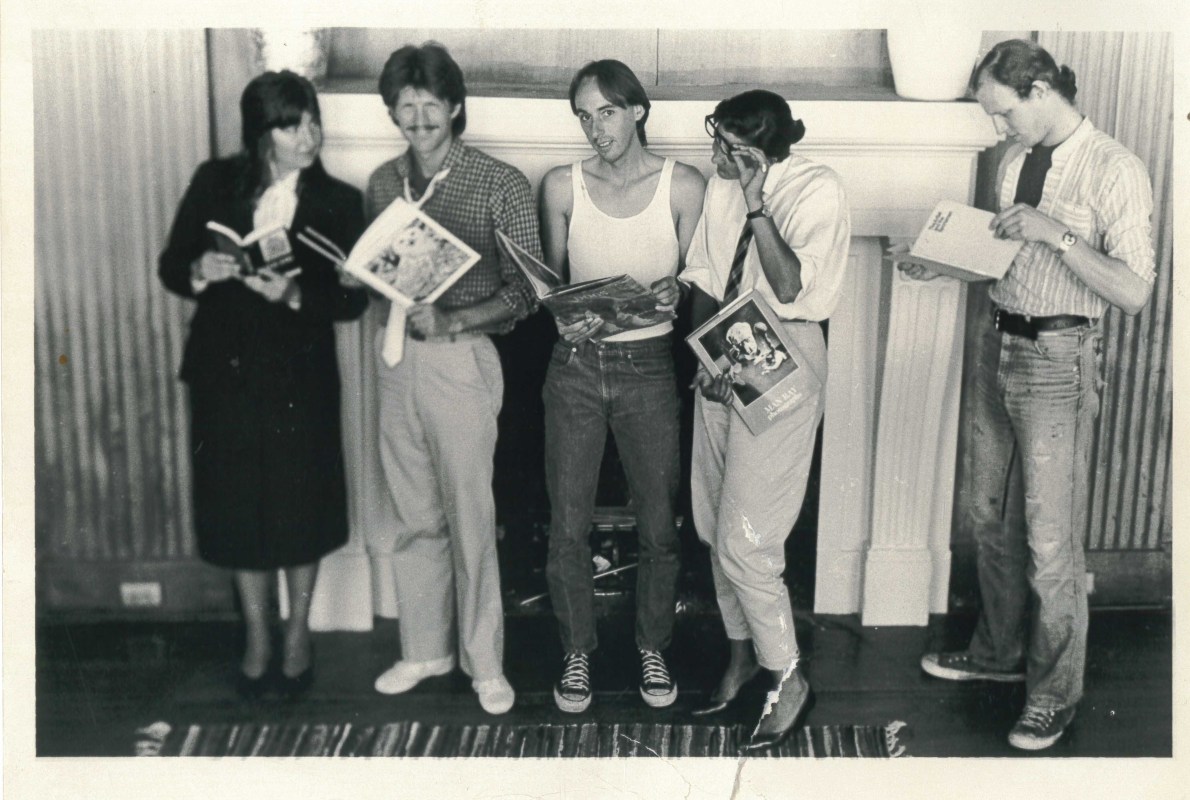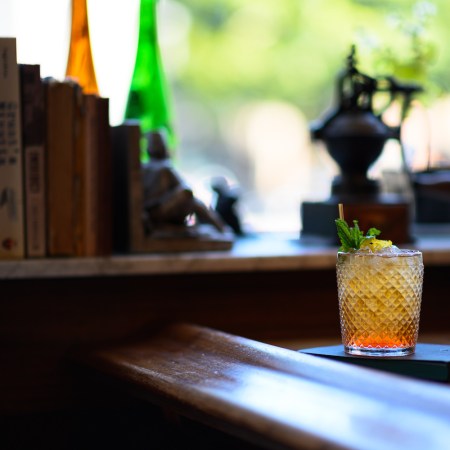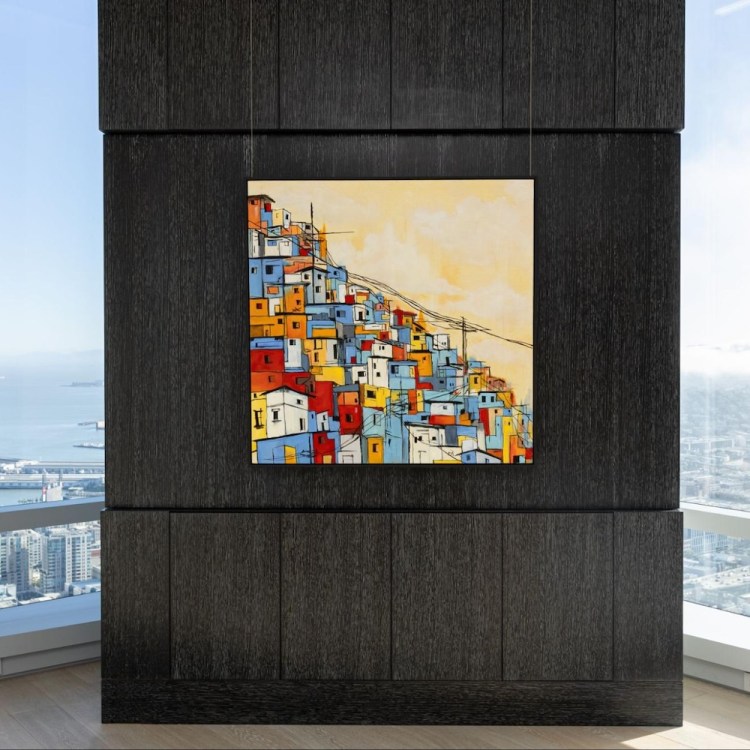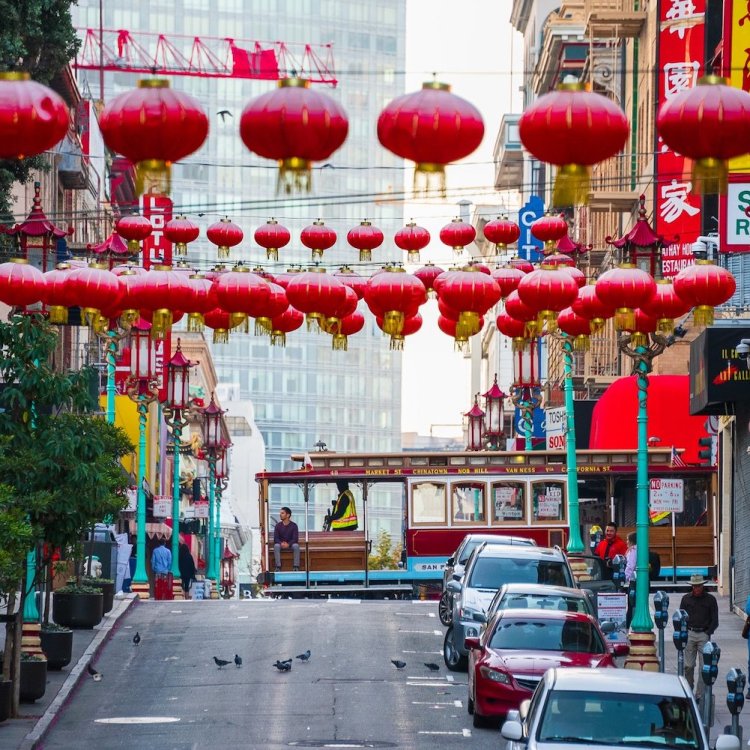Jeff Gunderson came to the San Francisco Art Institute in 1981 and now, in addition to his formal role as the school’s librarian/archivist, also functions as its institutional memory.
The oldest art school, and arguably the best, west of the Mississippi, SFAI houses a photo department founded by Ansel Adams and counts Angela Davis, Kehinde Wiley, Barry McGee, Mark Rothko, Kathryn Bigelow, Catherine Opie and others among its alumni and former faculty. Though the school faced shuttering last March, it recently marked its 150th anniversary, graduating a BFA class of six during the pandemic year. Their work is now on view in the “Harbinger” show, at the school’s Walter and McBean Galleries, through September 24. It’s open to the public, so go see it.
Here, we spoke with Gunderson about how San Francisco has retained its creative spirit despite all that money (beginning with the Gold Rush and lasting to precisely now), some of its better-known alumni (including a certain member of the Grateful Dead) and the school’s future. “I think there’ll be new opportunities and new ways of thinking, and people will be excited about trying to make a future out of them,” he says.
InsideHook: Do you think there’s something about SFAI that has made it such a reliable crucible of new talent?
Jeff Gunderson: Some of it has to do with San Francisco — the idea that you can’t go any farther west; there’s nowhere else to go. I think of the book When the World Rushed In, about San Francisco in the mid-19th century. The world’s always rushing in here, and when that happens, they bring new ideas with them.
Do you think that’s changed now, with the rise of tech? That it suffocates new ideas?
I think that [tech] is actually just one more manifestation of how that appears in San Francisco There was the Gold Rush, the building boom of the late 19th century, the railroad of the same era, the post-World War II era when everyone ended up here — whether it was the Summer of Love or coming here to avoid the draft during the Vietnam War, the Beat mentality of North Beach in the 1950s or the first dot-com [boom]. Money just always winds up in San Francisco.
Do you think those influxes of wealth are good or bad for young artists?
I know cultural workers — whether they’re from the opera or the museums or the symphony or wherever else — worry that what they’re doing is [now considered] old school and people aren’t going to be interested. But I think artists really kind of need to make art — and they’re going to make it despite their surroundings, despite the tech world, or the financial world of the ’80s.
The money thing is always connected to selling work, but people here have never been that interested in that aspect. People here say, “Oh, somebody appreciates my work. I must be doing something wrong.”
SFAI doesn’t have illustration or graphic design or other pre-professional degrees. How has it managed to retain its philosophy of art for art’s sake?
People here have always thought, I’ll be true to myself. They’re not illustrators necessarily. Although people here can illustrate — they can illustrate other people’s ideas, and they can do commercial work at any time. But I think they really want their own voice. That doesn’t necessarily go hand in hand with “making it” but that mentality is very much appreciated in the world of ArtForum or commercial galleries because they want to quote-unquote “discover” someone who’s unique and doing something interesting.
And it is a little bit different for undergraduate students versus graduate students. Graduate students really are destined for something within that art community. With the undergraduates, I would always kind of joke that anybody could go off and go to law school. We have plenty of lawyers who’ve come here to go to graduate school after realizing they wanted to be artists. I didn’t think I knew who came here and then went to law school. And then I came across somebody who did. [Brian L. Frye, who earned an MFA in filmmaking at SFAI before pursuing a law degree at Georgetown and recently made Our Nixon for CNN.]
Were there any artists who’ve come through SFAI where you’ve said, “They’re going to go on to great things”?
[Obama portraitist] Kehinde Wiley was always good. Iona [Rozeal] Brown was the same way. Barry McGee was like that — a very, very quiet student, at least in my contact with him, but his work was great. There have been plenty.
Is there a common personality trait that has brought those artists their success?
I don’t think so. I think of the photographer Larry Sultan, who was amazingly charming and could fit in really well with everybody. And then there’ve been plenty of people who have been very successful from here who are pretty comfortable as loners.
Do you think the school has a role to play in those successes, or would they have achieved it no matter where they went?
Probably some of them needed to be here, but not necessarily the ones who were the most successful. It’s really the others who gained something from being at a place where they could become themselves — and learn to feel comfortable walking out into the world and expressing themselves in some way, whether with art or something else.
San Francisco is part of that, the Art Institute is part of it, and certainly their fellow students are a big part of it. And whatever they glean from the faculty is part of it, too — though also that process involves [students] deciding, Well, I don’t need to pay attention to that teaching from that faculty member: “I understand what they mean, but I’m going to follow a different path.”
When Jerry Garcia was a student here, he told one of his teachers, “I have a little band.” And his teacher was like, “You better have a backup for that, because that’s not going to work out.” And part of that is the experience, too: You don’t necessarily have to pay attention.
This article was featured in the InsideHook SF newsletter. Sign up now for more from the Bay Area.
























